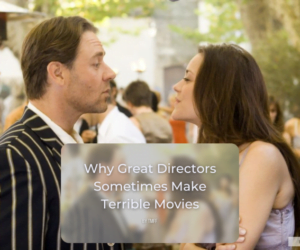Sometimes, you don’t have the time to watch a full-fledged film, making it the perfect opportunity to watch a short. If you don’t know, a short film is characterized by its brief duration. According to the Academy of Motion Picture Arts and Sciences, a short film is an original motion picture with a running time of 40 minutes or less, encompassing all credits.
Generally, short films allow filmmakers to take creative risks and experiment, partly because audiences are more inclined to embrace novelty or challenges, knowing they won’t consume their entire day. Thus, let’s discuss a few vital short films to view, some of which are personal favorites of mine.
Meshes of the Afternoon (1943)
Logline – A woman returning home falls asleep and has vivid dreams that may or may not be happening in reality. Through repetitive images and a complete mismatch of the objective view of time and space, her dark inner desires play out on-screen.
Few films have captivated me as much on first viewing as Meshes of the Afternoon. The film stands as a cornerstone in American experimental cinema and exerts profound influence. Created by Maya Deren in collaboration with her husband, cinematographer Alexander Hammid, it laid the groundwork for the independent avant-garde film movement in the United States, later recognized as New American Cinema.
La Jetée (1962)
Logline – The story of a man forced to explore his memories in the wake of World War III’s devastation, told through still images.
Le Jetée is unique in many ways, and it mainly represents how storytelling alone can win an audience over. Spanning just 28 minutes, La Jetée recounts the narrative of a time traveler navigating post-war Paris, trapped in a series of time manipulation experiments orchestrated by ominous scientists. Crafted predominantly from still images, the film delivers a poignant narrative, a vital reminder that love can stay authentic and powerful even amidst apocalyptic circumstances.
A Trip to the Moon (1902)
Logline – A group of astronomers go on an expedition to the Moon.
Georges Méliès left an indelible mark on cinema with over 500 films to his credit. Among cinephiles, A Trip to the Moon (Le Voyage dans la Lune) is the quintessential Georges Méliès masterpiece—a filmmaker with 500 films—immortalizing his name. It’s intriguing how a seemingly straightforward narrative about eccentric scientists embarking on a lunar voyage, encountering peculiar landscapes and fierce moon creatures, continues to captivate audiences across decades. The short lacks closeups, and even extra chorus girls in tights appear. Logic takes a backseat to fantasy despite the backdrop of a “scientific expedition.” Its effortless confidence may explain its enduring appeal, defying contemporary cinematic norms with its breezy and unorthodox style.
Outer Space (1999)
Logline – Footage from The Entity (1982) is edited into an abstract nightmare.
Outer Space is a fascinating film due to the filmmaker behind it—Peter Tscherkassky—techniques. Peter Tscherkassky, an Austrian avant-garde filmmaker, exclusively employs found footage in his creations. Rather than relying on modern technological methods, all his work is meticulously crafted using traditional film techniques, heavily edited in the darkroom.
Ice Merchants (2022)
Logline – Every day, a father and his son jump with a parachute from their vertiginous cold house, attached to a cliff, to go to the village on the ground, far away, where they sell the ice they produce daily.
For a contemporary piece, Ice Merchants is one of the best examples of a modern-day short. The ability to convey a narrative through elegantly simple details is genuinely remarkable, and Ice Merchants stands as a piece of art that the world could benefit from more. Its visual artistry and animation are thought-provoking and innovative, and I can’t recommend it enough.

















